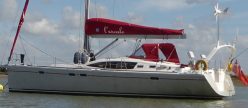Friday 31 January
We took a local bus a few miles inland to the white village of Mijas Pueblo, from where we followed a walking route in the Sierra (mountain range) de Mijas, one of a network of “signalized hiking trails” according to the map gleaned from the very helpful Tourist Information office in Fuengirola. On arriving in the town centre, it was not immediately obvious how to find the main road that runs between the town and the mountain, but we followed a street that led upwards and soon spotted the beginning of a trail. It is true that the routes are well “signalized”, with bands or dots of that track’s colour placed strategically and frequently on signposts or rocks, but they didn’t always seem logical, or necessarily to coincide with the map. Also, what we hadn’t allowed for was the recent spate of very heavy rain, which had resulted in patches of erosion of the very dry, thin, dusty soil and some landslips of loose rocks and scree. After struggling across a very steep hillside for a few hundred metres, it was obvious we’d lost the path, and we turned back – to find it almost immediately. I really don’t know how we managed to go wrong, but thereafter we were careful to look for the yellow dots, and we enjoyed a stretching walk with stunning views and beautiful countryside. The scent of pine resin was strong in the bright sunshine, and sweetly accompanied by yellow gorse and wild rosemary in full bloom. The highlight of the day was spotting a herd of wild mountain goats on the opposite side of the valley we were descending, and we stopped to admire their agility for some time.

At the end of the route, just before we rejoined the main road, we skirted a disused quarry, from which a rudimentary road had been laid in concrete. Unfortunately this was very steep and some loose gravel lay on top, on which Mate’s boots failed to find a purchase, resulting in a rather abrupt sit-down.
Back in the old quarter of the pretty town, we wandered along the Calle Campos, peeping into the tiny Chapel of Our Lady of Remedies, and the Caves of the Old Forge. These were effectively basements to the houses built above, clinging to the steep hillside, which held a consistent temperature year-round, making them useful stables or storerooms. On Plaza de la Libertad, at the foot of Calle San Sebastian, it was time to pause for a well-earned beverage and a chance to chat with an interesting fellow British couple at the next table. Suitably refreshed, we enjoyed a visit to the Folk Museum, which depicts “the old trades and traditions of the village”. Distinctly quirky in style, this was very interesting nevertheless, especially the testimonies of agricultural workers that had been translated into perfect English. We had fun trying to work out how the olive press would work; no helpful description we could understand, here, and all for one euro each. We strolled a little further around the edge of town, pausing briefly to consider the donkey taxi rank: apparently this service came about in the early 1960s when workers and their animals earned more for less effort from a few minutes with tourists than a day in the fields; and then we found our way back to the bus stop via a tempting heladería for a delicious ice cream treat.
